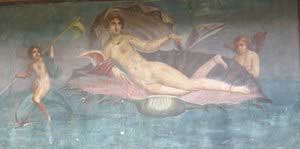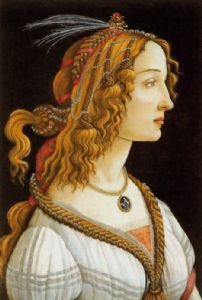 As I am very lucky to have a grandmother who was an opera singer who sang music from the Baroque era, I chose a musical piece. Johan Sebastian Bach has been one of my grandparents favorites ever since I can remember so I chose Cello Suite No. 1 because it is a beautiful piece and I have heard it many times.
As I am very lucky to have a grandmother who was an opera singer who sang music from the Baroque era, I chose a musical piece. Johan Sebastian Bach has been one of my grandparents favorites ever since I can remember so I chose Cello Suite No. 1 because it is a beautiful piece and I have heard it many times.
This piece is the first of six suites. It is also the most known of the six suites as most people are usually familiar with the tune. Sadly, there is not much known on the history of this piece, why it was written or for whom. However, we assume that this piece was written in 1720 when Bach was employed as the Kapellmeister for Prince Leopold in Cöthen between 1717 and 1723. This position is the highest rank a musician could be in during the Baroque era. Interestingly, Bach was actually locked up by Duke Wilhelm Ernst of Weimar, whom Bach was working for at the time, because the Duke did not want him to leave and work for somebody else. Luckily, he got away and was able to work for Prince Leopold in Cöthen. This was a good time of Bach’s life, although he did lose his first wife here in Cöthen, he also met his second here a short time later.
Prince Leopold

Prince Leopold made sure to have the best orchestra. He spent his budget on bringing musicians from all around to play in his court. Prince Leopold was a very young prince but had traveled quite a bit already during his short time so he was very educated on the Baroque era music. He even studied Italian secular music during his travels and was also a talented musician. He was very different than most royal people in the fact that he even oftentimes played with his orchestra (informally) and treated them as his equals. Prince Leopold was in high regard by his court and by Bach. As life in Cöthen was very laid back compared to other royal households, Bach spent a lot of time writing music for the court and for himself. It was a happy atmosphere. Bach and members of the court also traveled with Prince Leopold very often. A few years later, Prince Leopold married though and his new wife was not as easy going as him. She was not in favor of the prince playing music with the court and treating them as his equals. Due to this unfortunate event, it is said that Bach decided to leave or even had to leave due to the court being dissolved in 1723. Although, Bach’s children were also growing up and he was thinking of moving to a larger city for their education in music. Bach still was not happy about leaving Cöthen though. He even wrote to an old school friend, “There I had a gracious Prince as a master, who knew music as well as he loved it, and I hoped to remain in his service until the end of my life.” Bach went on to play for other royalty, but I wanted to focus on his time in Cöthen as that is where he wrote Cello Suit No. 1 (through 6).
The piece is a little unusual in a few ways. First of all, Bach was known to be an organist and second of all, the piece was not played publicly during Bach’s lifetime. Therefor it is believed that Bach played this himself to his family and friends in a more private setting. It is just unusual for Bach to produce a musical piece that was not played on an organ and also not played by others, although he did know how to play stringed instruments. Since this piece was not widely known during his lifetime, it could have easily been lost in time. Thankfully, Bach’s second wife, Anna Magdalena (as seen to the right), whom he met living in Cöthen made sure it wasn’t destroyed by making copies of the original.
was not played publicly during Bach’s lifetime. Therefor it is believed that Bach played this himself to his family and friends in a more private setting. It is just unusual for Bach to produce a musical piece that was not played on an organ and also not played by others, although he did know how to play stringed instruments. Since this piece was not widely known during his lifetime, it could have easily been lost in time. Thankfully, Bach’s second wife, Anna Magdalena (as seen to the right), whom he met living in Cöthen made sure it wasn’t destroyed by making copies of the original.
Sadly, I could not find any reasons for why Bach wrote this piece and there is no presumed secret love story behind it like in Botticelli’s work. However, I did make the connection that basically at any point, knowing the wealthy and famous (like the Medici Family or the Prince among others) is how many of these men became so successful and engrained in our history. They had to travel quite a bit to meet all the people they did. I also find it crazy how in any point of time in history, so much art has been lost and we are lucky that Anna Magdalena preserved this piece for us!







